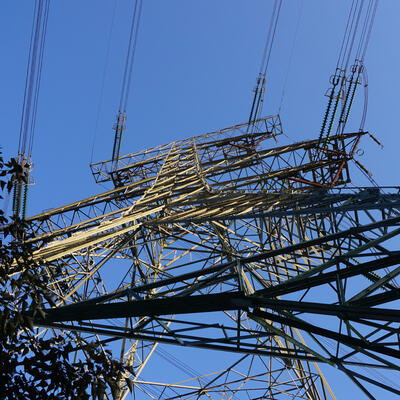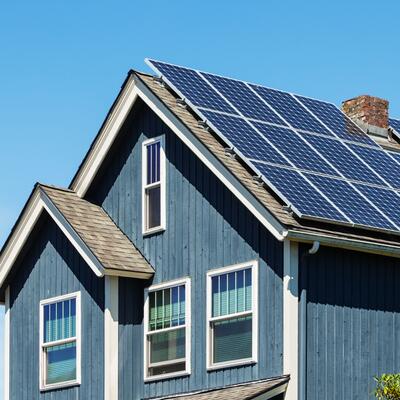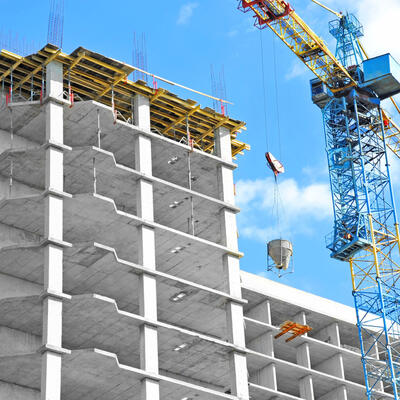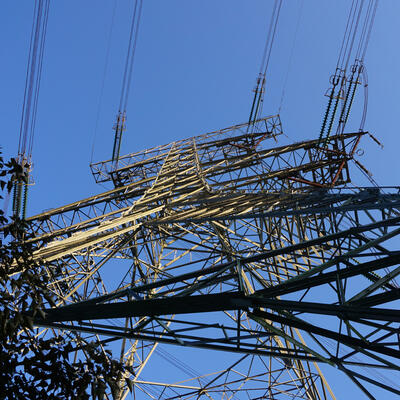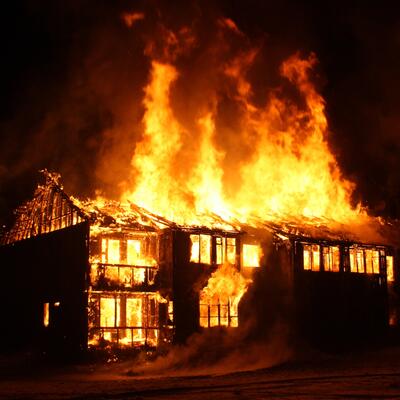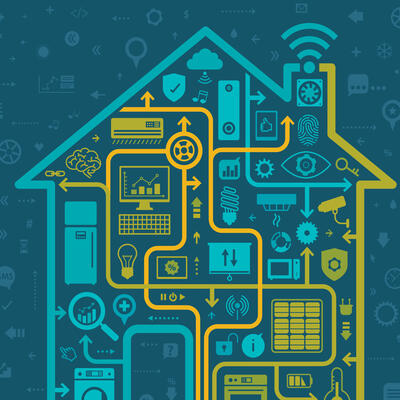
Green Buildings: Cooking Without Gas
Guests
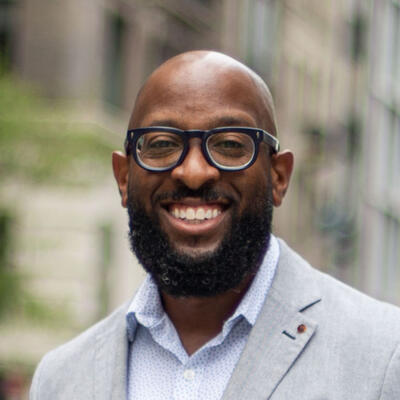
Mark Chambers
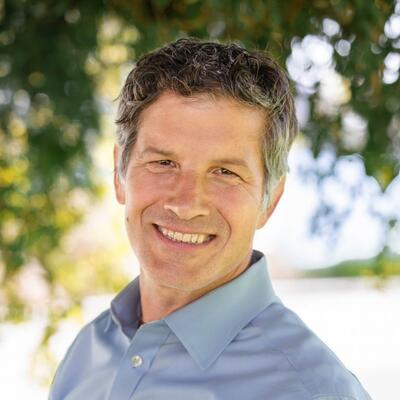
Bruce Nilles
Summary
As we move towards a fossil fuel-free future, it’s become common for homeowners to install solar panels to provide themselves with emission-free electricity. But until recently, many of us may not have realized that some of our biggest fossil fuel uses are inside our homes – with the machines that heat and cool water and air, dry our clothes and cook our food.
“Every minute of every day, 365 days a year, there is a new gas customer added to the gas distribution system. From a climate perspective, that is known as losing,” says Bruce Nilles, executive director of Climate Imperative, a foundation that supports climate policy.
Nilles spent years working to move the country past coal power by building and leading the Sierra Club’s Beyond Coal campaign. In the last 20 years the country has made a lot of progress, he says: “Out of 530 [coal-fired power plants] there’s 170 left. It is by far the biggest piece of carbon reduction that the US has accomplished, by far.”
Now, he’s working on getting methane gas out of homes and buildings, partly driven by the growing body of research on how harmful it can be for indoor air quality.
“It turns out that fossil fuels and humans don't actually coexist very well. And the amount of pollution coming off our gas stoves, in particular, are levels that violate both California and EPA standards for what is allowed outdoors, which is absolutely bonkers.”
While it may seem daunting to replace all your gas-powered appliances, the 2022 Inflation Reduction Act includes incentives and rebates for homeowners and renters to electrify their lives.
“We are not in the business of preserving our way of life. We are in the business, those of us in the climate, are in the business are changing the way we live,” says Mark Chambers, a national environmental policy leader and advocate for social justice who recently served as senior director for building emissions and community resilience at the White House Council on Environmental Quality.
And this shift isn’t just at the homeowner level. Chambers helped develop New York City's Local Law 97, which set building performance standards and carbon limits, and has become a template for similar performance standards in cities across the country. Building owners that don’t meet emissions limits are fined, but Chambers says the goal of the law isn’t to be punitive. “This is something that improves buildings. This is something that makes buildings cost less to operate. It makes tenants happier, healthier, and it also makes them longer tenants,” he says. “It is improving the quality, the longevity of the asset for building owners.”
Building decarbonization involves many moving pieces. “There's a workforce element, a training element, and a supply side element that is particularly important,” he says. As this generational shift takes place, Chambers says the goal is to reach a point where the easiest and lowest-cost option for replacing home appliances (thanks in part to government rebates) is fossil free. And just as importantly, the new influx of federal money should help democratize this transition and help those who have been left on the sidelines before.
“If we are working towards a clean energy future, if we're working towards a decarbonized future, then we have to make sure that everyone is part of the process by which we get there,” Chambers says.
Related Links:
Climate Imperative
Earth Alliance
The Inflation Reduction Act Passed. Now What?
Full Transcript
Note: Transcripts are generated using a combination of automated software and human transcribers, and may contain errors. Please check the actual audio before quoting it.
Ariana Brocious: This is Climate One, I’m Ariana Brocious.
It’s become commonplace for homeowners to install solar panels to provide themselves with emission-free electricity. But increasingly more attention is being paid to decarbonizing appliances inside the home–the machines that heat and cool water and air, dry our clothes and cook our food.
The Inflation Reduction Act includes many incentives for homeowners and renters to electrify their lives, and should be a huge boost to getting that transition underway. In some places, builders are developing highly efficient, all electric homes from the get-go. But this process will take time and be an evolution in how we approach building new homes and businesses.
Bruce Nilles is Executive Director of Climate Imperative, a foundation supporting climate policy. Prior to that he launched the Building Electrification Campaign at Rocky Mountain Institute and spent 15 years building and leading the Sierra Club’s Beyond Coal Campaign. But long before that, he grew up in rural England, where he vividly remembers when methane gas service came to his village.
Bruce Nilles: I grew up in England in the 1970s and early 80s. And we heated our house and hot water and cooked on coal. And so, my early childhood memories are of going out to the back shed where there was a giant pile of coal and I’m having to bring it in every morning to fill up and fuel our stove in the kitchen which provided all these services hot water, space heating and cooking. And then one day in the early 80s the road was getting dug up outside our house and they were delivering methane gas natural gas to every home in our little village. And literally we lived on the edge of a small village in a very small series of rowhouses and it was great. It was this moment where I felt liberated because I no longer have to go out to the back shed to get coal. And cooking was much easier just turn on the burner and hot water was miraculously provided without having to pull out the coal ash and otherwise deal with the stove in the kitchen. So, I distinctly remember that moment when natural gas showed up at our house.
Ariana Brocious: And did make your life better for that period.
Bruce Nilles: It did. It did. It was a lot cleaner in terms of my experience. I didn't have to shovel coal. I didn’t have to take out the ash in the morning because boom the gas burned and didn't see where the pollution went. And so, it seems like progress. It seems like progress from where we had been.
Ariana Brocious: So, let's fast-forward now to your working life. You spent many years working on the beyond coal campaign for the Sierra Club, Where does that effort stand now how close or how far perhaps are we to getting off coal for good?
Bruce Nilles: So, I have the great pleasure from much of the past two decades working on what ultimately became the Sierra Club’s Beyond Coal campaign, which was a nationwide effort to first stop the construction of a bunch of new coal-fired power plants going back to the presidency of George Bush and VP Dick Cheney. They tried to build and facilitate the construction of nearly 200 new coal plants, which was this remarkable shift in US energy policy because we hadn’t built any coal plants basically in two decades. Working with an amazing group of both Sierra Club activists and other organizations. We were able to stop the bulk of those getting built by the time President Barack Obama was elected in 2008 and took office in 2009. And of course, despite our best efforts the coal industry blocked Congress adopting any kind of climate legislation in 2011, 2012. So, that’s when we launched the second phase of beyond coal, which was really targeting the existing 530 coal plants. And remarkable progress again huge credit to groups and organizations across these country and good progressive climate leaders who today have basically got us down to 170 left. Out of 530 there’s 170 left. It is by far the biggest piece of carbon reduction that the US has accomplished, by far. It’s about a billion tons of reductions over the last 20 years. And it’s also opened up a huge market share for clean energy.
Ariana Brocious: When it comes to powering homes and businesses today about how much power comes from renewable electricity as opposed to fossil fuels so for speaking kind of just broadly?
Bruce Nilles: So, this year we will pass an amazing milestone. Coal used to be 50% of our electricity back 20 years ago. Today renewable energy this year will eclipse coal for the electricity coming into our home. So, it's an amazing milestone. The day that many skeptics said would never come. Today we’re at 22% of our power comes from wind, solar and hydro, 20% comes from coal and about 40% comes from natural gas. So, we still have a long way to go, but we've crossed over this very important marker demonstrating that clean energy is no longer fringe; it's not just something they do in California, it's actually mainstream. And the places that are leading on clean energy and see the economic benefits turn out to be primarily the more conservative parts of the country like Texas and South Dakota and Iowa where clean energy is booming and coal plants are falling faster than one can possibly imagine.
Ariana Brocious: And why is that? Is that because those places are good wind and solar resources just naturally? Or they haven't had a lot of that part of the market before?
Bruce Nilles: Couple of really important things. This year, I think have accomplished more globally on climate change than anyone ever thought was possible. Enormous progress in China, enormous progress in Europe and enormous progress here at home with the Inflation Reduction Act or the climate bill the Congress just passed. And so, why this is so significant what each of these three major carbon emitters are doing is because over the last 20 years some places have really invested in clean energy and deserve an enormous amount of credit for driving down the price and making it cost-effective. So, place like Germany, places like California, places like Texas have invested an enormous amount of wind and solar power back in the days when it was more expensive than fossil fuels. That has all changed. Today it is cheaper everywhere. And so, the reason we aren’t doing this faster is because there is inertia in the system; the coal industry is lobbying in places like West Virginia. Don't shut down our coal plants even though it costs our customers more. And they're succeeding in West Virginia. But in most places the cost argument is finally winning out. That is on top of the arguments that we've been making for the last two decades that there’s also profound public health benefits of reducing coal use. Now, with the low price of clean energy and super boosted by the action of President Biden and the Democratic Congress with the Inflation Reduction Act, it is now ready to 10X the progress we were making over the last 20 years and give us a fighting chance of keeping 1 1/2° alive.
Ariana Brocious: Yeah, yeah, it's an exciting moment. So, we started talking about coal and, you know, there’s sort of some obvious visual signs of why coal is dirty. You mentioned you know having to carry it or handle it when you were a kid and having ash. We can see the soot in the sky. Gas by contrast, is cleaner and seems cleaner. And I want to talk about this relationship that a lot of us have with gas. Many of us feel a fondness for our gas stoves. And I will say that as a homeowner when I was in the market shopping for a home it was a like must-have on my list that we have a gas stove. Because I had been you know, successfully convinced like many others, that that's the best way to cook real chefs use gas. So, I wanted to talk to you, I wanted you to help us understand where that comes from that marketing campaign and why so many of us might feel that way.
Bruce Nilles: Let me put it in the context of it never occurred to me that the gas appliances in my home were a big deal. So, I learned about climate change in the early 1990s, got terrified about it in college and knew I wanted to do something about it. I would come out learning in the geophysics building in the University Wisconsin in Madison and literally in the next door was the coal-fired power plant that powered the University. And there were literally pieces of coal falling through the fence onto the sidewalk as I walked out from these terrifying lectures, learning about the incremental increase in carbon dioxide in the atmosphere as a result of fossil fuel-burning. And so, this opportunity to work on coal was amazing. And I thought I learned a fair amount doing it for almost 20 years. And it was about five years ago right before I left the Sierra Club and someone said to me, do you know in California we’re burning more gas in our buildings than we are in our power plants. Now California shut down its coal plants many years ago and it’s making great progress on clean energy but still burns a lot of gas to produce electricity about 50%. And I knew that and there was a lot of good people working to replace that gas with clean energy. But it had never occurred to me that the 12 million buildings in California, each with their gas appliances were a bigger piece of the carbon puzzle. That then got me reflecting on my own home. I thought I knew something about climate. I thought I knew something about air pollution. It never occurred to me the biggest piece of my carbon footprints other than my flying were the four gas appliances in my home. My water heater, my furnace, my dryer and my gas stove. And that got me thinking about, huh, burning fossil fuels is a bad idea but burning them inside of our buildings are getting tighter because we’re doing all this great efficiency particularly in a place like California. Experts are telling us the tighter your building the better the more energy you save. But what about this burning of fossil fuels inside particularly the gas stove, which in most homes is not vented outdoors. And so, about five years ago this realization, wow, four gas appliances in my home, biggest piece in my carbon footprint. And why am I burning fossil fuel inside my house. It turns out that fossil fuels and humans don't actually coexist very well. And the amount of pollution coming off our gas stoves in particular are levels that violate both California and EPA standards for what is allowed outdoors, which is absolutely bonkers.
Ariana Brocious: Yeah, it is bonkers and it’s also been getting a ton of attention this year because, you know, there’s more and more research coming out about the harm that this causes for you to have indoor air pollution. But the reason so many of us use gas is because it's been marketed to us, right. The industry has done a good job of convincing us that it's a good fuel.
Bruce Nilles: They have. And so, I had exactly that big question when I began to understand try to understand how did we get to this place where we have 70 million buildings in the United States attached to the gas system. To get people hooked on this they had to come up with a marketing campaign. And the thing they focused on was the gas stove. And they decided that this idea of a flame and promoting it for chefs and that's what makes you a good cook was that there are sort of secret sauce if you will. And then a couple of years ago I was down in Alabama of all places talking to the local electric utility who happened to mention in passing I hate the gas utility. And I was like, say more. He says they’re trying to steal our customers. I was like what do you mean? He says they’re going door to door trying to persuade people much like my mother back in England in the 1970s to get hooked to the natural gas system. And I said, how do they do that? And he says, it’s all about the gas stove. That's their whole selling point. Look at all these videos look at all these chefs promoting it. And they have done and there are some terrific videos on YouTube that sort of recount this history some very painful moments in the sort of advertising history with rap songs and other things they did to promote gas. But it's been very systemic.
And once you think about it, you will see that little blue flame promoting cooking everywhere because it is ubiquitous. But it's also their biggest vulnerability because it turns out burning gas inside your home in your kitchen with your family is one of the most dangerous things that is happening to families by the millions every single day. And that's the story that’s been breaking in the last couple years. Scientists from Stanford and Harvard and other institutions have been really trying to understand what are you getting exposed to, what are your kids breathing when you turn on your stove to cook your evening meal. And it turns out you’re being exposed to levels in nitrogen dioxide, the EPA, the US Environmental Protection Agency says are illegal outdoors. The most recent study from two months ago from Stanford was not only is it causing asthma attacks and health problems associated with breathing it’s also releasing a large amount of benzene. Benzene is a known carcinogen. And this testing they were doing is what's the level of benzene when your gas stove is turned off. So, this is another mystery that we have not known about. We believe the gas industry is known about for a long time that when your gas stove is off it’s still leaking. And so, they tested homes kitchens across the country, across California and found levels of benzene in some instances, seven times the level that California says is safe. This is a known carcinogen coming out of the stove that the gas industry’s been promoting to us for more than three decades.
Ariana Brocious: You were involved in getting the city of Berkeley to ban new methane hookups and buildings. But as that effort has been taking off there has been real pushback by the American Gas Association, the industry and in some places like Arizona where I am, they have secured preemptive bans on bans. They’ve essentially been able to get cities or states to outlaw the prohibition of putting gas in buildings. So, let's talk a little bit about that and where that stands right now at the work you're doing?
Bruce Nilles: Sure. The American Gas Association tauts on their website that every minute of every day 365 days a year there is a new gas customer added to the gas distribution system. Every minute of every hour, 365 days a year. There are about 500,000 new gas customers every year. From the climate perspective that is known as losing. So, you have all these cities and states trying to do good stuff. Berkeley had passed a resolution declaring a climate emergency which is important. It's ratifying the science, yes, we have a climate crisis. And they’re trying to work out what to do. And it was in that conversation with a couple members of the City Council they were looking at well where are the emissions in a city like Berkeley. Or most cities it’s two places, buildings and transport. So, cities give approval in most instances, in most states to new building. So, literally Berkeley was handing out permits on a regular basis for new construction new buildings, apartment buildings and the single-family homes with gas service, i.e. making the problem worse because you’re literally locking in carbon emissions the next 30, 40 years. So, that was this aha moment where well, why doesn’t the city say no? We’re not helpless, let's do something. And it was then we realized, well, this is something we can do in many places and snowballed. And now, we have San Jose, the 10th biggest city in the country. We have New York City. The number one city in the country. Chicago is looking to do it next. LA is about to do it as well. And now we have entire states like Washington who have prohibited the use of gas in new buildings across the board, residential, commercial. So, the natural gas industry has not sat by idly; they've realized that we’re trying to take away market share to fix the climate problem. And so, has responded, no surprise, just like the fossil fuel industry did when we came after coal plants. And they are going to the folks who are politically aligned with the fossil fuel industry and who are oftentimes naysayers on climate change. And that is a suite of primarily Republican-led states who have been, despite their public statements about believing in local control and are always the first to talk about local control at the moment the federal government tries to do anything, are stripping cities of the authority to do anything. And it’s not a surprise. The 17 states now, it’s the same states that have banned minimum wages who have banned the ability of cities to have building codes. Cities to do something about building efficiency. So, it's the same pattern you see across Tennessee, Mississippi, Arizona where the fossil fuel industry has been heavily invested in electing state officials. Their latest ask of those elected officials is to prohibit pesky city leaders doing something about gas use in buildings. Two pieces of good news. One, ultimately this will get resolved nationally like most big environmental issues do. And it turns out most of the gas is being burned in blue and purple states. Because gas used in buildings largely tracks population and it turns out most large population states, with the exception of Texas and Ohio are very on the more progressive and climate minded. So, California burned about 8% of all the gas burned in buildings. New York State is 10%, add in Illinois, you’re 25% of the building gas used in the country, three states.
Ariana Brocious: So, in places that have passed those bans. What else can be done to decarbonize buildings? Are there ways to kind of work around that?
Bruce Nilles: There are a ton of opportunities. The primary one is that in the Inflation Reduction Act there is a ton of money to help homeowners not only get electric vehicles, but for the purpose of their home invest in electric efficient appliances. So, there is a ton of resources flowing from the federal level to help people in whatever state transition from fossil fuel to electricity. So, if you're a city in a state where the state legislature is making it very difficult for you to act on climate from a regulatory perspective, you can still help set up programs that are helping your residents take advantage of these federal incentives. And that’s really important because right now this is actually starting to feel a lot like it was in the 70s. There was rising electricity prices because the form of electricity in California back in the 70s was nuclear and it was turning out to be very, very expensive. With the war in the Ukraine and the fact that the US over the last several years has dramatically increased the export of natural gas. The price of natural gas in the US is now three or four times higher than it was this time two years ago. We have an affordability crisis for people who are relying on natural gas today in the United States. One in six Americans is behind on their utility bill. And it’s about to get a lot worse because our utility bills are going to go even higher this winter. So, we have an opportunity to address both an affordability crisis and with federal resources particularly the new grant and tax credits in the Inflation Reduction Act to help people both address their climate footprint but also get out of this trap of very, very extensive fossil fuels.
Ariana Brocious: So, as a consumer. What should someone target first if they want to try to get gas out of their homes whether they’re renter or a homeowner what should they try to go after?
Bruce Nilles: The first thing I would get rid of is the gas stove. The science is rock-solid, but the piece that this story that sort of brought this all home to me is there’s a researcher who did some of the early work in Baltimore in low-income housing with asthmatic kids. And she was at John Hopkins and she's a pediatrician. She says I can tell you when a parent last cooked based on when the child uses their inhaler, their asthma inhaler. Now, I don’t know if you know any loved ones with asthma it is a horrifying there’s nothing worse than seeing your loved one go blue from not being able to breathe with asthma. And the notion that researchers like her, distinguished researcher from John Hopkins University, has been documenting that children are being exposed every time their parents turn on the gas stove to asthma attack inducing levels of air pollution and our regulators have stood by, is a crime. And that fall squarely at the feet of gas industry to who this day will put out press releases saying, well, no federal agencies ever said that gas stoves are particularly harmful to public health. When they know from their own studies and all the stuff that’s out there that gas stoves are exposing millions and millions of children and adults to levels of air pollution that would be illegal outdoors.
Ariana Brocious: So, clear incentive for someone who wants to get gas out of their home. Start in the kitchen.
Bruce Nilles: Start in the kitchen. Consumer Reports, the very trusted voice that rates appliances and a bunch of other things. They've done a bunch of great work looking at induction cooktops. And when they look at one of the best cooking stoves out there, consistently induction all electric efficient induction is their top choice. Induction cooking is so much of a better experience. It's awesome. It heats water so fast, it's clean. It cleans up so nicely. It's sort of like an electric car. If you've ever had a chance to drive one. Once you are in it you’re like I don't miss the noise I don’t miss the smell. I don't miss going to the gas station. So, it is worth the investment to work out if you have the means. It can be very hopeless thinking about climate change, it seems very big. What can I do as an individual to shut down a coal plant or a gas plant or clean up the steel mill in Pennsylvania? This is something I could do locally. I can start in my own home, which is something that we desperately need in this moment of this existential crisis that we need to have the ability to do something, and this is something profound we can all do.
Ariana Brocious: Bruce Nilles is Executive Director of Climate Imperative. Bruce, thank you so much for joining us on Climate One.
Bruce Nilles: My pleasure. Thank you, Ariana.
Ariana Brocious: Induction stoves aren’t the only way to bring more efficiency into homes. Climate One contributor Cody Short brings us a story about smart homes built in one Birmingham, Alabama neighborhood that offer an example of building that uses less energy.
*AMBI* of driving down the street
Cody Short: Last May Bertina Robinson was driving on First South Street and discovered the homes that are part of “Live on 1st”, a new affordable housing development. Now she lives in one of the houses.
Bertina Robinson: This is a smart system house. I can lock my doors from my phone, I can turn my heat on from my phone, I can turn my air on from my phone.
Cody Short: “Live on 1st” is a group of three smart, highly energy-efficient modular homes in the Titusville neighborhood of Birmingham. These homes are the first set of such homes built by Navigate Communities in the city. The organization, a subsidiary of the county’s Housing Authority, is taking a modern approach to affordable housing. Nearly 25 percent of Birmingham residents live in poverty. Titusville is on the outer edge of the downtown area. In the last year, there have been some new developments and reconstruction of older homes. As people continue to move into the core of Birmingham, some say that Titusville is next for redevelopment.
Lisa McCarroll: We address gentrification by making sure we target the people that we target. And that's not the folks that are making, you know, 80, 90, $100,000. Not that there's anything wrong with that. But in this particular element of our work, it's those folks that are just, you know, 40 to $60000 a year.
Cody Short: Navigate Communities CEO Lisa McCarroll says the smart homes are targeted at people who can’t typically afford a home or spend all their money on starting costs AND pay expensive utility bills. According to Alabama Power, smart homes are 35% more efficient than standard Alabama homes being built today.
Lisa McCarroll: Now, if I've spent all of my money to get into the home, now that I'm paying my utilities and living, 90 … I can scrape up on 90 bucks. Scraping up on 300 bucks, that's a little bit harder to do.
Cody Short: Alabama Power, the region's largest power company, is providing energy-efficient upgrades and smart home equipment to the “Live on 1st” homes. The utility company is also involved with several other market-rate smart communities across Alabama. Smart home resident Bertina Robinson, who works full time at Walmart, says her power bill has never been more than $80 a month. Plus she can tell her home is energy efficient when she walks through the door.
Bertina Robinson: I cut my heat off when I come home is still warm inside my house. And also my light bill is very low.
Cody Short: Jason Kirby leads the Sustainable Smart Cities Master's program at the University of Alabama at Birmingham. He says while there may be a learning curve for the public to adopt modular smart homes, that kind of building is the way of the future.
Jason Kirby: Modular homes can be built in any size. It doesn't limit you to square footage.
Cody Short: Modular homes can sustain most weather conditions just like a traditionally built home. They use the same materials and must pass the same regulations. The biggest difference is that modular homes are built in a factory, which saves energy. They are then shipped in segments to the building site where they are assembled. A traditional home that’s built on-site requires a lot of waste removal and a longer build process. According to Navigate Communities, construction accounts for 61% of the home price, which is why modular homes are more affordable. Kirby says historically the construction industry hasn’t been very focused on sustainability or environmental impact. But with techniques like modular building, that’s starting to change.
Jason Kirby: Trying to build smarter, using better materials, using more energy efficiency. And overall, just trying to improve both the human aspects and environmental aspects of our job.
Cody Short: An established smart community in a neighboring Birmingham suburb features induction stovetops and heat pump water heaters and relies on a microgrid of solar and battery storage for some of its power. Kirby says while Alabama doesn’t have the highest solar potential because of its cloud cover, adding solar to a building project can further reduce its climate footprint.
Jason Kirby: We do get a lot of cloud cover. We have a lot of fugitive dust. It's not as efficient as it is in other parts of the world, but it does generate after construction, essentially free power for us, with no emissions.
Cody Short: With more of these smart homes, more people of various economic means can enjoy lower energy bills and reduce their emissions while living comfortably – demonstrating that energy-saving technologies like heat pumps, induction cooktops, and solar power are no longer just for the rich. I’m Cody Short for Climate One.
Ariana Brocious: Cody Short is a reporter at WBHM in Birmingham. Mark Chambers is a national environmental policy leader and advocate for social justice who recently served the Biden Harris administration as a presidential appointee. He’s currently joining the leadership effort to launch Earth Alliance, an organization to rapidly shift cultural narratives around climate action. Climate One host Greg Dalton recently had the opportunity to interview Mark Chambers at a U.S. Green Building Council conference.
A lot of conversations about green building rely on technocratic language, like R values for insulation and MERV ratings for air filters. Greg asked Chambers how we could better humanize our conversations around buildings and sustainability.
Mark Chambers: I'm a nerd. I really appreciate the specificity that comes with R values and MERV filters and knowing like exactly what the capacity is for something to operate effectively and be able to do the calcs that allow for decision making, but that is very unrecognizable to most people and for good reason. And so I think that we do ourselves a disservice when we use the same tactics for different audiences. It's just, it's not effective. And to be honest, it is, I think, a little bit lazy. I think that we actually need to be a little bit more thoughtful about the fact that we are not just in the work of outcomes, we are in the work of process so that those outcomes can be inclusive and bring as many people as possible along the board. It's like you have to think about a much longer time horizon of this work, and I think that when we get caught in a lot of the language that is so emission specific, it ends up being something that is very easy to tune out, when we need a larger swath of the population to bend their skill sets in service of climate action.
Greg Dalton: Every job is a climate job and I live in Northern California, which is wildfire country now almost year round. So MERV values is something I'm paying attention to and it's nerdy, but it also has a very human meaningful impact when you're breathing wildfire smoke. So those are the sorts of things I think more people are gonna be dealing with in a very personal way. Can you cite an example where you've taken a risk or a nerdy conversation and steered it in a professional context to a more personal level? And is that something you do? Is that effective or is that a scary thing to do?
Mark Chambers: So it's scary because it requires vulnerability. And you offer an opportunity for, I think, a deeper connection. And so I, I particularly always try to remember that we are not in the business of preserving our way of life. We are in the, we are in the business, those of us in the climate, of changing the way we live. One example, which I'll use, but I'm not sure if it meets the exact question. I was director of sustainability for Washington DC and so worked for several mayors there and it was very impactful. DC is just a weird place because it's a population of about 700,000 people. It's a city-state in a lot of ways in terms of autonomy and authority, but the distance from good ideas to decision making is a lot shorter than it is in other places. So the moment kind of came when we recognized that we could lead by example, if we are not just talking about the work around switching to kind of clean energy, but actually doing something about it. And so we actually worked to do a power purchase agreement for a wind farm in southwestern Pennsylvania. It ended up being about 40% of the city's power usage. And at the time it was the largest municipal power purchase agreement in the country, But, I recognize that this was not going to resonate with people as much. We bought a wind farm in southwestern Pennsylvania. Like what does that mean for how it connects to the city? So my team and I, we went to a fourth generation flag maker within the city. We had them make a 10 foot flag, the Washington DC District of Columbia flag. And my team and I, we drove the whole way to southwestern Pennsylvania. Met with a team at the wind farm on site, and we carried and hoisted up a DC flag on the top a windmill. It was important because it wasn't about, you know, kind of claiming our territory, doing whatever it was about creating a symbol that DC could be proud of. And it was about making sure that we were going to allow for this to resonate. And one of the most consistently used photos that I've ever seen for the DC government is that photo of a DC flag flying high atop a windmill because it allowed for them to connect themselves to something that they would never actually see in real life, but they know that their city is something that is now on the vanguard of work. And so I know that's not exactly what you mean about personalization, but I think it's about making sure that we can connect this work to people in a way that resonates with them and doing it in a way that is not just the technology of how many kilowatt hours this wind farm is delivering to the city. It's about the fact that by doing so, we are taking a role in our clean energy future.
Greg Dalton: The Inflation Reduction Act will direct billions of dollars toward electrification. The new narrative of electrify everything. What's different now than when the 2009 Recovery Act also directed billions toward. Shifting the energy with mixed results. What lessons have been been learned? What's different now?
Mark Chambers: Yeah, so I mean, I think we're smarter. I think that we have a recognition of the fact that the initiation of the funds are one step, but local government is where all of the magic happens, and it's where everything actually, like, where the rubber hits the road, but also where you really start to be able to unpack any inconsistency or problem in like these large federal bills. So I think that we learned a lot. I worked on RF funds when I was in DC and have seen those play out. And the reality is that cities need help to be able to demystify the kind of complexity of working and using these funds and reporting on these funds while they're also trying to implement these projects. And you have cities now that are gonna be lined up to get this money. They spent two years recovering from a pandemic, all the projects that they wanted to start in 2020 have been delayed until now. So you're now at a place where you're trying to meet this kind of notion of like shovel ready projects you're trying to upgrade plans for projects that you now want to double down on. Maybe like not investing in any fossil infrastructure. You might have had some laws that passed in the interim that are starting to set the tone for no new natural gas connections or some higher and stricter policies around efficiency. So cities are gonna need a lot of help and they're gonna need a lot of help to be able to make sure that they're focusing on doing the actual implementation work and not as much focus on how to get the paperwork right to be able to use these dollars. So I think that what I saw with a lot of the work, I spent the last year and a half at the White House and working with agencies every single day, Department of Energy, working with HUD, working with all of the entities that really are at the forefront of this IRA work and they get it. They've been slowly kind of building up the infrastructure to be able to have really direct connection and support services with city governments, small and large cities across the country in a way that I think will be particularly a determinant of how this is different than the RF funds are used. So I'm excited about what's possible, but I'm also really trying to keep my eye on the ball to make sure they're lining themselves up in the right way.
Greg Dalton: Right, and there's money to go to those state and local agencies to do that though there's another kind of education or infrastructure gap, and that is educating property owners and installers about heat pumps, induction, cooktops, other equipment that formally run on fossil fuels. There's a real education. I recently went through the process of installing heat pumps. Ripping out a propane tank and getting rid of the fossil fuels. It's a curve and it's a slog for a guy who is motivated and then you have to have the motivated vendors and installers. What's happening there to kind of support that this time?
Mark Chambers: Yeah, I think that is right. You know, there's a workforce element, a training element, and a supply side element that is particularly important. What I'm kind of most heartened by is the fact that one of the things that there was a staple of working in the administration was how intent everyone was on the driving home of this connection with organized labor and unions and making sure that they are also at the table for recognizing that there's a moment that's happening that is not going to be business as usual, and there needs to be a certain investment that's happening now to increase the workforce. And I also recognize that not all of this work that's happening is gonna be organized labor, union labor is a lot of trades involved and just a lot of knowledge base that needs to be increased. But I do think that the significance and quantity of work that's coming on the pipeline, it's being heard loud and clear by those that are training the workforce to be able to do it. But this gets back to this notion of every job as a climate job, you have to recognize that we're in a place where there still needs to be more people in this field. There needs to be more people choosing in saying that there's an option here for me to have well-paying jobs that are connected to how we make this electrification transition and doing that in a way that is not so daunting and where the barriers to entry are not quite so significant. So we need to actually be recognizing that this is viable. It is something that will be in operation. That's why the IRA, especially, a lot of the rebates are in place for 10 years. Like this is a generational shift that they recognize that it's going to take that long to be able to build out the workforce, to be able to engage in this.
Greg Dalton: There's all these tax incentives now, $8,000 that down. Where should someone start in their home if they're like, okay, all right, I gotta, you know, you'll think people are gonna start when something breaks?
Mark Chambers: So I think that people will start when something breaks. I mean, that's, I think that's just the logical path. And if you look at all the research that's been done, for the most part, your air conditioner breaks in the summer. That's when you address your air conditioner. Same thing with your heater, same thing with your water heater. Same thing with your dishwasher.
Greg Dalton: And you often do it with, if that happens, you do it with the quickest, fastest, cheapest option.
Mark Chambers: It has to be in by that weekend or before someone else in your household demands that you like, either it gets replaced or you get replaced. So that's just how we operate, right? And I, and I don't think there's anything wrong with that because I also feel like it's unrealistic to assume that everyone either has the capacity, the funding or the value proposition and time to be able to say, Hey, I wanna switch out every different component of my house right now. Fine, I get that. I do think what's important is to make sure that when those times come with all those different pieces, we are in a place to be able to have abundant options that are affordable and options where you don't have to create this value proposition in order to make this decision. You don't have to be an early adopter. You don't have to be a tree hugger like we are. Like, you can actually be like, Hey, I just need this to be replaced. This is the one that when I walked into Home Depot or Lowe's that was out front with the sale sign on and the sign that says there's a government rebate, and the sign that says like, hey, we will deliver this for you. You know, like all of those pieces are how private sector also does their job to be able to bend everyone's decision making towards something that is universally helpful. Also in the IRA is money to upgrade your electrical panel. I mean, I think that's also something that we don't really appreciate. What's happening right now is these panel boxes, fuse boxes, however people refer to them, they also have embedded technology that allows for it to kind of understand what's happening on the supply side and the grid side, as well as what's happening in your home, and start to kind of make those smart connections so that every time you add a different piece to that puzzle, all of those are working in continuity to reduce your overall footprint and to actually make each piece operate more effectively, more efficiently, and serve you better. Like all of those things can actually work in tandem and that makes us happier in our homes and it makes our homes healthier. And I think it creates a proposition that is about our quality of life as opposed to a proposition that is about adherence to a climate first kind of agenda.
Greg Dalton: So we have this narrative of electrify everything. There's a jobs component, there's a government policy component. There's an education workforce. Who's included in that narrative of electrify everything and who's left on the sidelines? And what role has the fossil fuel industry played in shaping that narrative?
Mark Chambers: Well, we could talk all day about what the fossil fuel industry has done and how we are gonna be suffering from that for quite some time. But I think that the question of how we move forward, who moves forward, I think is something that I have been very heartened to see is being coupled really intently and in a lot of the work that's been happening now in green building and in moving into a place where equity has its, and inclusion has its rightful place in the conversation. I went to school in Pittsburgh and I'm always visiting and there was an artist named Alicia Wormsley that did a billboard in the one neighborhood in Pittsburgh. And simply put on the billboard it said, ‘There are Black people in the future.’ And that was it. Right? And it was like a comment about like how we think that we have to imagine futures in a way that includes everybody. And it was just very simple and it always stuck with me as being this really potent reminder that if we are working towards a clean energy future, if we're working towards a decarbonized future, then we have to make sure that everyone is part of the process by which we get there. And because otherwise you run the risk, and which we've seen time and time again of people not only feeling excluded from the future we're creating, but actually actively being excluded from the future we're creating. And so I think that, I remember that piece of art cause I also feel like art has the ability to influence us in a very strong way. But I'm reminded of the fact that as we start to kind of develop these policies, we have to make sure that we are kind of looking at all different components of the kind of strength of our economy and our population and doing that in a way that kind of meets everyone where they are and doing it in a way that starts to create more incentives for those that are frontline communities, those that are most vulnerable, and those that have the most to gain from these efforts. I mean, one of the big chunks of money that you've seen in the IRA is going out through HUD as well because it's showcasing the fact that like the work that can happen in affordable and public housing is gonna be particularly important and you'll see the biggest gains for everyone that's a part of those communities because we recognize that like that is also collectively a responsibility to reorganize our priorities as we're shifting to this, this future that everyone's a part of.
Greg Dalton: Well, yeah, of course the climate doesn't care the coat skin color of the person that generated emissions, right? Climate doesn't care. You were instrumental in New York City's Local Law 97. It set building performance standards and carbon limits. The law applies to a million buildings that emit the lion's share of New York City's emissions. And it was a template for one of the most ambitious plans that spread across cities and states across the country. Owners that don't meet it get fined. We're having a real debate now in California with a state's wagging a stick making jurisdictions build more housing. So how important is it to have sticks as well as carrots in building and decarbonizing the buildings we're working on?
Mark Chambers: Incredibly important. I mean, I think Local Law 97, it was a building performance standard that was my Everest of working for the people of New York City. And there were a couple things that were particularly important to me about that. Number one is that we needed to make sure that the metric we were using to establish this was a carbon metric. Like we talked so much about energy efficiency and while that's important, the thing that's killing us is carbon emissions. So let's actually put in place the metric and measure what we're trying to actually address. And so that was a very particular kind of threshold and a source of a lot of debate in how we actually developed and put forth those carbon caps that were specific to different building typologies. So Class A office buildings have different caps than public assembly, have different caps than housing and multi-family. The other thing that was particularly important I think was recognize that this is not just a penalizing component for building owners. This is something that improves buildings. This is something that makes buildings cost less to operate. It makes tenants happier, healthier, and it also makes them longer tenants. So you end up having something where this is an investment. It is improving the quality, the longevity of the asset for building owners. Yes, there's upfront costs, but there's always upfront costs. And so we also, at the same time we passed Local Law 97, we also passed a law to enable PACE financing, property assessed clean energy financing in New York City so that you can take out loans that would mimic the payback timeline of your investment. So replacing your windows takes seven years of energy savings to pay those back. You get a loan from a pace that's a seven year loan as opposed to rigid standard that would not be able to be easily organized by building owners. So creating assets where they can actually access funds more readily and begin these investments, but also recognizing that not everyone has to do the same amount of work. So some buildings, it's about you have great systems, turn them on and off the way you're supposed to, have these buildings actually operate better and you'll be below the caps. You know, there's some buildings where it's like, hey, you actually do need to invest and do some work, but maybe it's just weatherization. Maybe it's actually not as big a lift. And some of them that are really externalities. Yeah, you have to put in a lot of work and you should, because that is part of how we all do our part to acknowledge our collective responsibility here. So I think sticks matter. I think we're past the age of carrots and I think they've been grossly ineffective. And so sticks are very important. One of the key things that I was really driving when I was at the White House was also trying to expand the prevalence of building performance standards. After we did this in New York City, several other cities also developed building performance standards. Washington DC, Boston, Chula Vista in California, Denver, St. Louis, a handful of others. And so what we did is we created something called a Building Performance Standards Coalition, a National Billing Forward Standards Coalition. We got 35 or so cities and states across the country to agree that they would do the work to put in place building performance standards over the next two years, so that by Earth Day 2024, you were gonna have a new cohort, a new swath of cities all across the country, representing about 20% of the gross floor area that would then have building performance standards as part of the operating principles moving forward. And so I think that's the kind of thing where what happens in New York City I do think matters. I think it echoes across the country and globe in a lot of ways, but it also needs help. And so one of the things that I was particularly interested in is making sure that we can have a force multiplier for good work like that so that even though there's a lot of debates still happening in New York City about this work and how it moves forward, that's fine, but the rest of the country is moving forward as well.
Greg Dalton: Yeah. Similar to what California has done in other cases and, you know, cap and trade, which is controversial and part of that thing. There's a lot of focus these days on decarbonizing cement and steel. A recent episode of Climate One focused on cleaning up emissions from those emission intensive sectors. The UN is leading a green public procurement pledge trying to create demand pull for those cleaner building materials. But innovating in commodity markets where tiny price increases are punished is tough. So what's your take on when we'll see meaningful adoption of greener steel and concrete, which together are more than 8% of global emissions, bigger than a lot of countries.
Mark Chambers: Yeah. So I'll first acknowledge that there's a lot of people that are a lot smarter on this than I am. But I do think that where you have these minor cost increases that have significant impact in both availability and sourcing, I think even though there's a significant source of emissions, I think that you're gonna see a little bit of a lag time in terms of the movement that happens within those particular commodities. I think that a lot of that gets driven by policy. So whereas you can have innovation in spaces around different kind of aggregates and concrete, you are not gonna see the market demand, I don't think, until there are tighter restrictions about what level of kind of content is acceptable for different types of projects. And that's driven by kind of local and also by state policy around purchasing. I think that's one that is gonna require the political and policy intervention in order to see it expedited. More so than just the innovations happening on the technical side.
Greg Dalton: There are many parts of the country that have a very dirty grid. How do we electrify in those areas when it may not be a carbon wind for a furnace, water heater, dryer, et cetera, to electrify everything? It depends. There's regional variation.
Mark Chambers: Absolutely. But what else would you have us do? Right? I think that we have to be honest about the fact that the work that is happening to clean and decarbonize our grid is happening and it's moving forward. And yes, there are a lot of variations in the supply makeup of different parts of the grid, but that doesn't mean that the housing, the building stock can't be ready for it when it does.
Greg Dalton: The grid's getting cleaner over time. There are renewable portfolio standards are cleaning up the grid.
Mark Chambers: Exactly. And so it's gonna happen. But I also think that we need to start putting a certain amount of value in clean electrons that we haven't kind of mastered yet. It's almost like we need to be thinking about clean electrons as currency and then actually valuing it in a way that is particularly akin to its benefits as opposed to the negative externalized benefits of fossil based electrons. So when we are in a place where we're starting to now think about, it is more valuable for me to be able to pull this clean electron and use it in this other place. That exchange actually may be better if we actually put the burden on fossil electrons the way that it should. So I think we're gonna see that change a little bit in a way that allows for it to have that value, even if you're waiting for your grid to particularly move in a clearer direction faster.
Greg Dalton: Your new venture is interesting and you're working on an effort to kind of shape narratives and create cultural tipping points. So how are you gonna do that? And what's the void that's created, I think of often, governments don't have a huge marketing budget to put behind messaging to shape the narrative. If the inflation reduction act were a corporate initiative, they'd have a huge communications budget. They don't have that and taxpayers don't want 'em to have that. So what are you doing to create those new narratives and cultural tipping points?
Mark Chambers: Yeah, absolutely. I mean, I think that you're absolutely right. There's not just recognizing what kind of government action does and doesn't do. It's also what are they good at and what are they not good at? Right. And I think that a lot of us that have been in this space of government are just not effective and also in some ways are often not trusted in certain ways around some decision making and some prioritization. And I think that's fine. Content creation is not just happening in a newsroom for 9:00 PM news. It's happening in a diversified and in a way that is disconnected from a lot of central kind of organizing. So you have content creators that are happening on social media and part of the ability to to be in service of how people are actually receiving information and digesting it is providing those content creators with real, clear, effective information that's science-based, so that they can then do their thing to be able to distribute the information in whatever way they see fit. So I think there's a certain distributed model that is developing that I'm excited to be in service of. And also I think there is a model in which we are relying a little bit more on the cultural, the arts kind of community, but also the recognition that we are in a place now. I think we can effectively move people from private luxury to public luxury if we are thoughtful about that as a concept that is beneficial both individually and collectively, and that we recognize that we all have a role to play in that.
Greg Dalton: Thank you, Mark.
Mark Chambers: Thanks a lot, Greg.
Ariana Brocious: On this Climate One... We’ve been talking about decarbonizing buildings and homes for a cleaner energy future. Climate One’s empowering conversations connect all aspects of the climate emergency. To hear more, subscribe wherever you get your pods. Talking about climate can be hard-- AND it’s critical to address the transitions we need to make in all parts of society. Please help us get people talking more about climate by giving us a rating or review. You can do it right now on your device. You can also help by sending a link to this episode to a friend. By sharing you can help people have their own deeper climate conversations.
Greg Dalton is our host and executive producer. Brad Marshland is our senior producer; Our managing director is Jenny Park. Our producers and audio editors are Austin Colón and me, Ariana Brocious. Megan Biscieglia is our production manager. Our team also includes consulting producer Sara-Katherine Coxon. Our theme music was composed by George Young and arranged by Matt Willcox. Gloria Duffy is CEO of The Commonwealth Club of California, the nonprofit and nonpartisan forum where our program originates.
